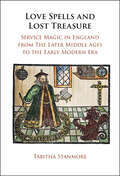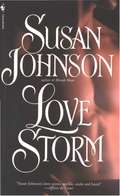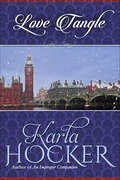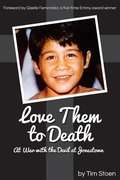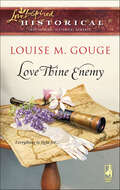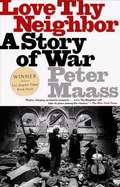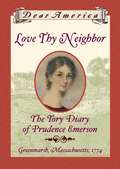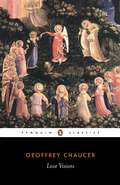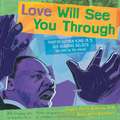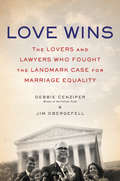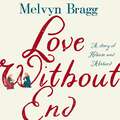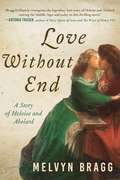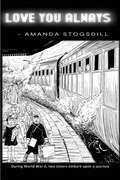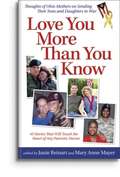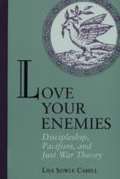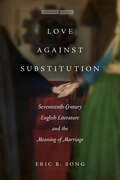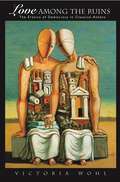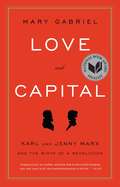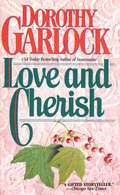- Table View
- List View
Love Spells and Lost Treasure: Service Magic in England from the Later Middle Ages to the Early Modern Era
by Tabitha StanmoreMagic is ubiquitous across the world and throughout history. Yet if witchcraft is acknowledged as a persistent presence in the medieval and early modern eras, practical magic by contrast – performed to a useful end for payment, and actually more common than malign spellcasting – has been overlooked. Exploring many hundred instances of daily magical usage, and setting these alongside a range of imaginative and didactic literatures, Tabitha Stanmore demonstrates the entrenched nature of 'service' magic in premodern English society. This, she shows, was a type of spellcraft for needs that nothing else could address: one well established by the time of the infamous witch trials. The book explores perceptions of magical practitioners by clients and neighbours, and the way such magic was utilised by everyone: from lowliest labourer to highest lord. Stanmore reveals that – even if technically illicit – magic was for most people an accepted, even welcome, aspect of everyday life.
Love Storm (Russian/Kuzan Family #2)
by Susan JohnsonThis erotic romance, long out of print, returns for the fans of the bestselling author of Pure Sin, Seized by Love and Outlaw. When the notorious rake Prince Alexander Kuzan encountered the alluring redhead seeking safe passage to her ancestral home, little did he suspect that Zena would entangle him in a rapturous struggle for the heart.
Love Story: The 50th Anniversary Edition of the heartbreaking international phenomenon (Oxford Bookworms Elt Ser.)
by Erich Segal'An era-defining romance' - Daily MailHe is Oliver Barrett IV, a rich jock from a stuffy WASP family on his way to a Harvard degree and a career in law.She is Jenny Cavilleri, a wisecracking working-class beauty studying music at Radcliffe.Opposites in nearly every way. But they fell in love.This is their story.The record-breaking novel of the blockbusting movie, which became the number one box office hit of 1970, was nominated for 7 Academy Awards and was named one of the 100 most romantic films of all time by the American Film Institute.Further praise for LOVE STORY:'Iconic . . . tissues at the ready!' - My Weekly'Beautifully written, profoundly moving' - Sunday Express'A lump forms in the throat and starts growing until it feels like a football coming up sideways. You either fight it or let it out' - New York Times'We loved it and we think you'll love it too' - Sun'Incredible . . . A poignant novel of nostalgia and romance' - Washington Post
Love Tangle
by Karla HockerCharming, romantic, and painted with gorgeous Regency detail, Karla Hocker&’s romances will delight readers from the very first page. Weary of playing the game of love, the sixth Earl of Fenchmore had a rather jaundiced view of the marriage-minded maidens who surrounded him. They all were simpering, manipulative featherbrains and he'd have nothing todo with them—or their ambitious mothers. So jaded was the arrogant lord that the forthright intelligence of Miss Deanna St. Cloud seemed nothing less than a miracle. But he was not about to surrender his hard-kept independence simply because her lovely grey eyes shone with wit and her riotous red curls spoke of inner passion and fire.
Love Them to Death: At War with the Devil at Jonestown
by Timothy Stoen"Love Them to Death" is a memoir of my experiences as the attorney, enemy, and postmortem target of James Warren Jones who, on November 18, 1978 in Jonestown, Guyana, unleashed—in the name of "love"—terror and death. It tells how this ordinary man, Jim Jones, having captured the souls of kind and decent people, got them to assassinate a US congressman and, incredibly, got them—by the hundreds—to kill themselves and their children. "The mass suicides and murders in Jonestown, Guyana," said pollster George Gallup, "was the most widely followed event of 1978." By then Jim Jones had become a "Molotov cocktail." The container was Jones's absolute power. The flammable liquid was Jones's malignant narcissism. The wick was Jones's genius for mind control. In the end Jim Jones was nothing but evil. "The CIA would have had to acknowledge," said Stanford psychology professor Philip Zimbardo, "that Jones succeeded where their MK-Ultra program failed in the ultimate control of the human mind." On January 1, 1970, I joined a utopian movement called Peoples Temple, in order to pursue "Biblical socialism" (Acts 2). I became the pro bono lawyer for Jones for 7 years. Jim Jones eventually became what the "Washington Post" called a "West Coast Power," with a remarkable gift for wining over the most sophisticated people in politics. On November 18, 1977, I testified in court and went to war against Jones. By then, he had moved to Jonestown. I turned on Jones because I'd learned he was denigrating to a five-year-old child, John Victor Stoen then in Jonestown, his mother, Grace. During that one-year war for John Victor, I made two trips to the then “wired” country of Guyana, and in California I braced, every time the doorbell rang, for a shot to the chest. Finally, on that November 18th, the journey took a petrifying turn. Jim Jones killed 907 of his people by cyanide, and orchestrated the deaths, by gunfire at the nearby airstrip, of US congressman Leo Ryan and four others. Among those he took out by the poison was six-year-old John Victor Stoen. Structurally, this book traces the “development” of Jim Jones, as I experienced it from 1967 through 1979, through fourteen stages. On the day he died, Jim Jones exhorted his followers to "see that Stoen does not get by with this infamy." I was accused--falsely, I might add--of manipulating the 1975 San Francisco mayoral election, won by George Moscone over John Barbagelata, and then arranging to become special voter fraud prosecutor to cover up my crime. On that same day Jones made a prophecy: "We win when we go down. Tim Stoen has nobody else to hate... Then he'll destroy himself." It took nine years to undermine that curse. I have three reasons for writing this book. The first is to encourage healthy suspicion of authoritarian power. I want to show how leaders are corrupted by absolute power, and how they use charisma and demagogic oratory to acquire that power. The second reason is to encourage realistic approaches to fighting evil. I want to give evidence for psychiatrist Scott Peck’s position that evil people can be dealt with only by “raw power." My third reason is to give hope to people who, like me, have made huge mistakes in their lives. Recovery is possible. After all of my unbelievable mistakes, it is a miracle that I should now find myself alive, sane, and vital. It is truly due to something outside my control.
Love Thine Enemy
by Louise M. GougeThe tropics of colonial Florida are far removed from America's Revolution. Still, Rachel Folger's loyalties remain with Boston's patriots. Handsome plantation owner Frederick Moberly's faithfulness to the Crown is as certain as his admiration for Rachel-but for the sake of harmony, he'll keep his sympathies hidden. After all, the war is too far distant to truly touch them...isn't it?A betrayal of Rachel's trust divides the pair, leaving Frederick to question the true meaning of faith in God and in country. Inspired by Rachel to see life, liberty and love through His eyes, Frederick must harness his faith and courage to claim the woman he loves before war tears them apart.
Love Thy Neighbor: A Story of War
by Peter MaassAn American reporter recounts his experiences in Bosnia.
Love Thy Neighbor: The Tory Diary of Prudence Emerson (Dear America)
by Ann TurnerThe drama of the American Revolution is brought to life through the eyes of young Prudence Emerson, who tells the story from the rarely heard perspective of a Tory.
Love Tribulation of Qidan Princess: Volume 1 (Volume 1 #1)
by Na LanJingYuLooking at the woman lying on the street with a pool of blood on her lower body,Yale turned his head to look at the Liu family younger brother with bloodshot eyes.
Love Tribulation of Qidan Princess: Volume 2 (Volume 2 #2)
by Na LanJingYuLooking at the woman lying on the street with a pool of blood on her lower body,Yale turned his head to look at the Liu family younger brother with bloodshot eyes.
Love Visions
by Geoffrey ChaucerSpanning Chaucer's working life, these four poems build on the medieval convention of 'love visions' - poems inspired by dreams, woven into rich allegories about the rituals and emotions of courtly love. In The Book of the Duchess, the most traditional of the four, the dreamer meets a widower who has loved and lost the perfect lady, and The House of Fame describes a dream journey in which the poet meets with classical divinities. Witty, lively and playful, The Parliament of Birds details an encounter with the birds of the world in the Garden of Nature as they seek to meet their mates, while The Legend of Good Women sees Chaucer being censured by the God of Love, and seeking to make amends, for writing poems that depict unfaithful women. Together, the four create a marvellously witty, lively and humane self-portrait of the poet.
Love Will See You Through: Martin Luther King Jr.'s Six Guiding Beliefs (Into Reading, Trade Book #4)
by Sally Comport Angela WatkinsNIMAC-sourced textbook <P><P>The niece of Martin Luther King, Jr. reveals six timeless and universal principles that encompass the civil rights leader’s greatest legacy: Love will see you through. <P><P>Growing up as the niece of Martin Luther King Jr., Angela Farris Watkins witnessed firsthand the principles and values that “Uncle M.L.” practiced and lived by throughout his fight for equality. Drawing from experiences and episodes both personal and well-known, Dr. Watkins artfully details the guiding beliefs of one of the greatest men in history. Including “have courage” and “love your enemies,” these six hallmarks of virtue and nonviolence reinforce the truth that “the universe honors love” and will inspire readers of all ages.
Love Wins: The Lovers and Lawyers Who Fought the Landmark Case for Marriage Equality
by Jim Obergefell Debbie CenziperThe fascinating and very moving story of the lovers, lawyers, judges and activists behind the groundbreaking Supreme Court case that led to one of the most important, national civil rights victories in decades—the legalization of same-sex marriage.In June 2015, the Supreme Court made same-sex marriage the law in all fifty states in a decision as groundbreaking as Roe v Wade and Brown v Board of Education. Through insider accounts and access to key players, this definitive account reveals the dramatic and previously unreported events behind Obergefell v Hodges and the lives at its center. This is a story of law and love—and a promise made to a dying man who wanted to know how he would be remembered.Twenty years ago, Jim Obergefell and John Arthur fell in love in Cincinnati, Ohio, a place where gays were routinely picked up by police and fired from their jobs. In 2013, the Supreme Court ruled that the federal government had to provide married gay couples all the benefits offered to straight couples. Jim and John—who was dying from ALS—flew to Maryland, where same-sex marriage was legal. But back home, Ohio refused to recognize their union, or even list Jim’s name on John’s death certificate. Then they met Al Gerhardstein, a courageous attorney who had spent nearly three decades advocating for civil rights and who now saw an opening for the cause that few others had before him.This forceful and deeply affecting narrative—Part Erin Brockovich, part Milk, part Still Alice—chronicles how this grieving man and his lawyer, against overwhelming odds, introduced the most important gay rights case in U.S. history. It is an urgent and unforgettable account that will inspire readers for many years to come.
Love Without End: A Story of Heloise and Abelard
by Melvyn Bragg'Melvyn Bragg's account of the passionate and painful love affair between the 12th century radical theologian, Peter Abelard, and the brilliant young convent-educated Eloise springs magnificently to life . . . Thrilling.' Piers Plowright, Tablet Within the Cloisters of Notre-Dame, a charismatic philosopher and a young woman renowned for her scholarship embark on an ardent, secret affair. It will send shockwaves through Paris, incur savage retribution and lead to years of separation, though nothing will break the bond between them.Bringing the true story of Heloise and Abelard to vivid life, this engrossing novel conveys the powerful emotions and beliefs that drove them. It captures a couple who defied the conventions and religious orthodoxies of their times with striking audacity, and illuminates why their extraordinary tale still resonates today.
Love Without End: A Story of Heloise and Abelard
by Melvyn Bragg'Melvyn Bragg's account of the passionate and painful love affair between the 12th century radical theologian, Peter Abelard, and the brilliant young convent-educated Eloise springs magnificently to life . . . Thrilling.' Piers Plowright, Tablet Within the Cloisters of Notre-Dame, a charismatic philosopher and a young woman renowned for her scholarship embark on an ardent, secret affair. It will send shockwaves through Paris, incur savage retribution and lead to years of separation, though nothing will break the bond between them.Bringing the true story of Heloise and Abelard to vivid life, this engrossing novel conveys the powerful emotions and beliefs that drove them. It captures a couple who defied the conventions and religious orthodoxies of their times with striking audacity, and illuminates why their extraordinary tale still resonates today.
Love Without End: A Story of Heloise and Abelard
by Melvyn BraggA profoundly thought-provoking, moving novel that breathes fresh life into one of history's most remarkable and enduring love stories. Paris in 1117. Heloise, a brilliant young scholar, is astonished when the famous, radical philosopher, Peter Abelard, consents to be her tutor. But what starts out as a meeting of minds turns into a passionate, dangerous love affair, which incurs terrible retribution. Nine centuries later, Arthur is in Paris to recreate the extraordinary story of Heloise and Abelard in a novel. To his surprise, his daughter visits and agrees to help, challenging his portraits of a couple who seem often inscrutable, sometimes breathtakingly modern. It soon emerges she is on her own mission to discover more about her parents' fractured relationship - and that Arthur's connection to his subject is more emotional than he cares to admit.(P)2019 Hodder & Stoughton Limited
Love Without End: A Story of Heloise and Abelard
by Melvyn BraggThe Timeless Romance of Heloise and Abelard Is Given New Life in this Poignant Novel by an Award-Winning Author, for Fans of Philippa Gregory and Elizabeth Chadwick The tale Heloise and Abelard has captivated the attentions of romantics since the twelfth century. Heloise was a woman beyond her time: educated, fierce, and unafraid to be herself. When Peter Abelard, a radical philosopher determined to reform the archaic practices of the Church from within, becomes her private tutor, the attraction is overwhelming. Their passionate love affair soon becomes dangerous, as enemies and opportunists hide in every shadow. In the twenty-first century, Arthur, a historian and author, roams the city of Paris to step into the shoes of Peter Abelard, to understand his true reasoning for abandoning Heloise. Needing to discuss his hypothesis and hoping to reconcile, Arthur invites his estranged daughter, Julia, to join him in the city of lights. But Julia could care less about lovers long dead; she is on a mission to discover the truth about her parents, and why her father left. Told in alternating narratives that transcend centuries, Love Without End delivers an unflinching look into relationships, fractured and whole, to discover the true nature of love in all its forms.
Love You Always
by Amanda StogsdillTwo Jewish sisters separated in a strange country-England. Not knowing where the other lives, each must adjust to her new guardians. Leah's new family is cruel; she's used for farm labor and struggles with the family's Christian faith. Esther attends a school for the blind; her guardians are kind, and she develops friendships with other girls and one of the staff. Their parents remain in Berlin. As the war continues, letter-writing sees them through the uncertainty of not knowing their parents' whereabouts. Will they be reunited again? At the outbreak of World War II, Jewish sisters Leah and Esther are alone in a strange country, England. They become separated, not by their choice. Esther, who is blind, attends school, and Leah is sent to live with a farming family. Communicating through letters, their love and determination to be reunited sees them through difficult circumstances.
Love You More Than You Know: Mothers' Stories About Sending Their Sons And Daughters To War
by Janie Reinart Mary Anne MayerIn these stories, mothers share their feels about sending sons and daughters off to war.
Love You, Mean It: A True Story of Love, Loss, and Friendship
by Eve Charles Julia Collins Claudia Gerbasi Ann Haynes Patricia CarringtonWhen their husbands went to work on September 11, 2001, these four women never thought they would never see them again. After the horrific events of this one day, they had to re-build their lives again and learn to live and love with out "the boys". they form the Widdows Club, (WC) and with each others help, they are able to move on, and learn to live and love again.
Love Your Enemies: Discipleship, Pacifism, and Just War Theory
by Lisa S. CahillThe author examines the theological bases of just war theory and pacifism, especially in the light of the concept of God, as that motive illuminates Christian discipleship. Differences between the theory of just war and the practice of pacifism are highlighted in the overview of the history of Christian thought on the subject, and the inclusiveness of the ideal of the kingdom for pacifism is emphasized.
Love against Substitution: Seventeenth-Century English Literature and the Meaning of Marriage (Cultural Memory in the Present)
by Eric B. SongAre we unique as individuals, or are we replaceable? Seventeenth-century English literature pursues these questions through depictions of marriage. The writings studied in this book elevate a love between two individuals who deem each other to be unique to the point of being irreplaceable, and this vocabulary allows writers to put affective pressure on the meaning of marriage as Pauline theology defines it. Stubbornly individual, love threatens to short-circuit marriage's function in directing intimate feelings toward a communal experience of Christ's love. The literary project of testing the meaning of marriage proved to be urgent work throughout the seventeenth century. Monarchy itself was put on trial in this century, and so was the usefulness of marriage in linking Christian belief with the legitimacy of hereditary succession. Starting at the end of the sixteenth century with Edmund Spenser, and then exploring works by William Shakespeare, William Davenant, John Milton, Lucy Hutchinson, and Aphra Behn, Eric Song offers a new account of how notions of unique personhood became embedded in a literary way of thinking and feeling about marriage.
Love among the Ruins: The Erotics of Democracy in Classical Athens
by Victoria WohlClassical Athenian literature often speaks of democratic politics in sexual terms. Citizens are urged to become lovers of the polis, and politicians claim to be lovers of the people. Victoria Wohl argues that this was no dead metaphor. Exploring the intersection between eros and politics in democratic Athens, Wohl traces the private desires aroused by public ideology and the political consequences of citizens' most intimate longings. Love among the Ruins analyzes the civic fantasies that lay beneath (but not necessarily parallel to) Athens's political ideology. It shows how desire can disrupt politics and provides a deeper--at times disturbing--insight into the democratic unconscious of ancient Athens. The Athenians imagined the perfect citizen as a noble and manly lover. But this icon conceals a multitude of other possible figures: sexy tyrants, potent pathics, and seductive perverts. Through critical re-readings of canonical texts, Wohl investigates these fantasies, which seem so antithetical to Athens's manifest ideals. She examines the interrelation of patriotism and narcissism, the trope of politics as prostitution, the elite suspicion of political pleasure, and the status of perversion within Athens's sexual and political norms. She also discusses the morbid drive that propelled Athenian imperialism, as well as democratic Athens's paradoxical fascination with the joys of tyranny. Drawing on contemporary critical theory in original ways, Wohl sketches the relationship between citizen psyche and political life to illuminate the complex, frequently contradictory passions that structure democracy, ancient and modern.
Love and Capital: Karl and Jenny Marx and the Birth of a Revolution
by Mary GabrielBrilliantly researched and wonderfully written, LOVE AND CAPITAL is a heartbreaking and dramatic saga of the family side of the man whose works would redefine the world after his death. Drawing upon years of research, acclaimed biographer Mary Gabriel brings to light the story of Karl and Jenny Marx's marriage. We follow them as they roam Europe, on the run from governments amidst an age of revolution and a secret network of would-be revolutionaries, and see Karl not only as an intellectual, but as a protective father and loving husband, a revolutionary, a jokester, a man of tremendous passions, both political and personal. In LOVE AND CAPITAL, Mary Gabriel has given us a vivid, resplendent, and truly human portrait of the Marxes-their desires, heartbreak and devotion to each other's ideals.
Love and Cherish
by Dorothy Garlock17 years old and terribly alone, Cherish Riley runs into the Kentucky wilderness from the low-down family that dared to sell her. She meets a man named Sloan Carroll, who proposes to her, but he finds that it will take a little more to win her heart.
